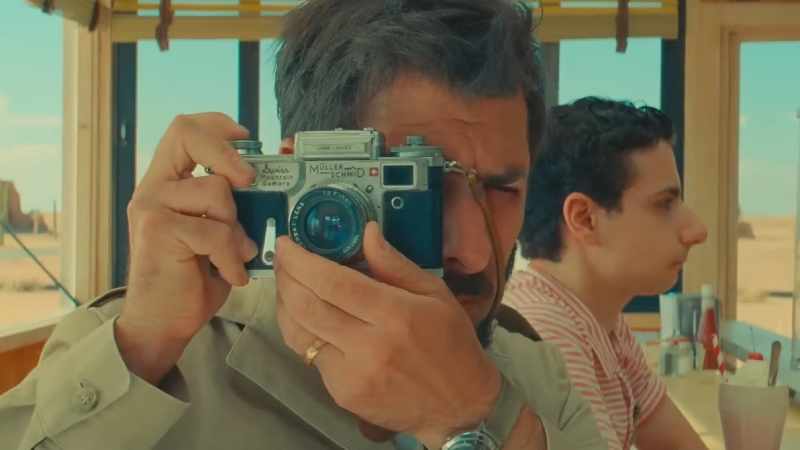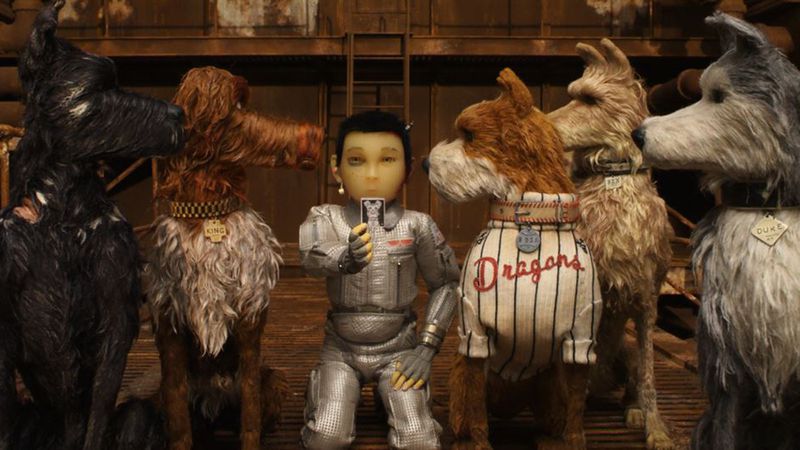The year is 2001 and cinephiles across the globe gather hand-in-hand in order to celebrate their new auteur, Wes Anderson, upon the release of The Royal Tenenbaums. It was still acceptable to support Anderson’s magnum opus without being labeled “uninspired” by a Twitch streamer. When an original voice gets taken for granted by the masses, it inevitably becomes cool to hate, belittle and mock a specific art direction. The descent into loathing Wes Anderson’s singular style could be one of cinema lovers’ most tragic and misdirected attempts at higher thinking. With every film Wes comes out with, there is a fresh crop of gripes.
The most recent surge of critique against Wes Anderson started with a (seemingly) harmless AI calibration of Wes Anderson’s signature style set to other films. After the first attempt, the trend became unbearable rather quickly. Even worse, it sparked debates about how Anderson’s stylistic choices hinder emotional depth in his films. Film Twitter became insufferable when discussing if Wes Anderson has ever hit an emotional beat. Deemed “easy” and pointlessly deadpan, hate for Wes Anderson has become, officially, trendy. Conversely, it’s also cool to like Wes Anderson again.
The concoction of naturalistic detail and broken characters create a highly effective undertone of tragedy in Wes Anderon’s work. With everything in perfect order except the personas portrayed on screen, the characters’ complexity begins to seep through in a subdued, but impactful way. It’s with this model that Wes gives us characters like Margot and Ritchie Tenenbaum, Gustave and Sam Shakusky. Anderson’s subtle stroke of genius is the transition from quirky and eclectic moments to genuine gut-punching pathos. The symmetry, colour palettes, and delivery do not hinder Anderson’s emotional capabilities, but instead enhance them.
In every Wes Anderson story, there is a bleeding heart. For his most recent release, Asteroid City, this sentiment was driven home in arguably his most ambitious vision yet.

.
The universe inside the universe
With Asteroid City revolving around a play set within the film, Anderson takes a risk foreign to most of his other work structurally. The immediate toying in breaking the fourth wall lends itself to the audience in much more direct fashion than his previous works. This method of metalanguage and sneaky world blending offers something extremely heartfelt as the film approaches its final act. This is due to a particularly outstanding performance from Jason Schwartzman, who plays Augie Steenbeck. Augie, a war photographer and widower, must tell his four children that their mother has died. Struggling with the timing on this matter, Augie recruits the help of his father-in-law, Stanley Zak, who Tom Hanks plays.
Immediately we are introduced to one of Wes Anderson’s most wounded characters. Yes, the delivery of these characters is still very much in Westopian fashion. Anti-fans of Anderson will dish the usual takes of the subjects being automated and mechanical. However, if there was ever a film of Wes’s filmography that benefited from this delivery the most; it’s this one. What makes Asteroid City different is the layered recognition of inevitable solitude. Almost every single character in the film deals with a quarry about their place in the universe.
Woodrow Steenbeck, played by Jake Ryan, is a kid genius who often separates himself from the pack because that’s most comfortable for him. He is not intimidated, but he is shy. June Douglas, played by Maya Hawke, has her world turned upside down after a cataclysmic event rocks the town. In real-time, we see her grip loosening on what purpose she serves as an educator. Midge Campbell, played brilliantly by Scarlett Johanson, is a two-time divorcee who is also a movie star. Her longing for a standard romance and acceptable fate masks her celebrity. The point is this; Wes Anderson uses his signature dialogue notes in Asteroid City to de-alienate his subjects. He’s always done this. The calculated beats, pauses and idiosyncratic rhythm of the film’s dialogue create a through line for otherwise wildly lonely characters.
Everything is brought to a halt when the alien arrives. In all its animated glory, the alien provides the film’s thesis. It represents unanswered grief, curiosity, and fate. It forces the occupants of Asteroid City to face their own versions of existential dread, coming together in the only companionship they may ever experience.

.
The story without a story
Wes’s ultra-brief usage of this goofy alien sequence is one of the year’s most thought-provoking talking points. Like Jeff Goldblum said, it’s a metaphor. As Woodrow wonders about the alien’s motive, his father works through complicated grief, using the alien’s visit as a medium. At the end of this, Wes is telling us that sometimes there is closure in knowing there is no closure. What is the play about? We don’t know. We are never supposed to reach that rejoinder.
The film takes an absurdist turn once chaos ensues after the news that the quarantine lift is canceled. We see Jones Hall, the actor playing Augie Steenbeck in the film’s play, exit the set frantically, searching for an answer to why Augie burns his hand on the grill. This question comes up earlier in the film when Jones Hall visits the play’s writer, Conrad Earp, played by Edward Norton. Here, Anderson really drives home with the film’s heart.
Jones Hall is now experiencing his internal dilemma on why anyone does anything in the first place. Augie has moulded his way through the bleeding heart of his real-life embodiment. “You can’t wake up if you don’t fall sleep.” Cryptic as it may be, it offers an intense moment for audience members after Anderson’s allegorical tale’s world-bending tactics come to a close.
The film also benefits from outstanding practical sets and golden nuggets of character work from, Bryan Cranston, Tilda Swinton, Jeffrey Wright and Steve Carell. If it’s a Wes Anderson film, you know that the film is visually stunning. Through all his on-par whimsy, quirkiness, and monotonous splendour, Wes Anderson delivers a proper dystopian look at what it means to be delivered with how random and unforgiving life can be. Not knowing what the play is about becomes the ticket to self-government. Let the rush of melancholic sadness take you over as the credits roll; it will undoubtedly enhance the post-film contemplation.
…
.











